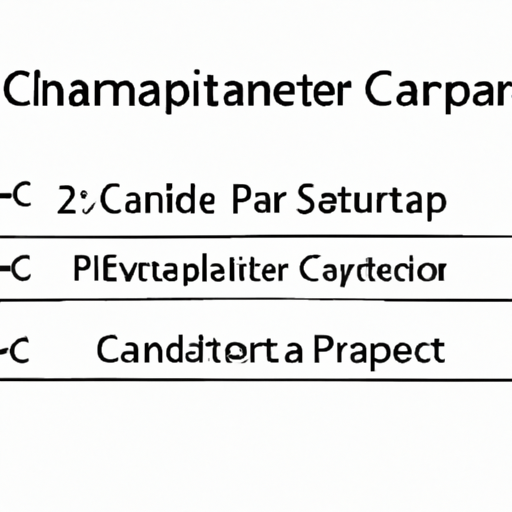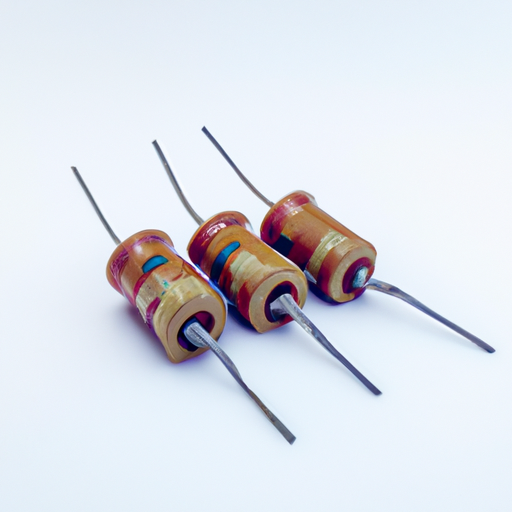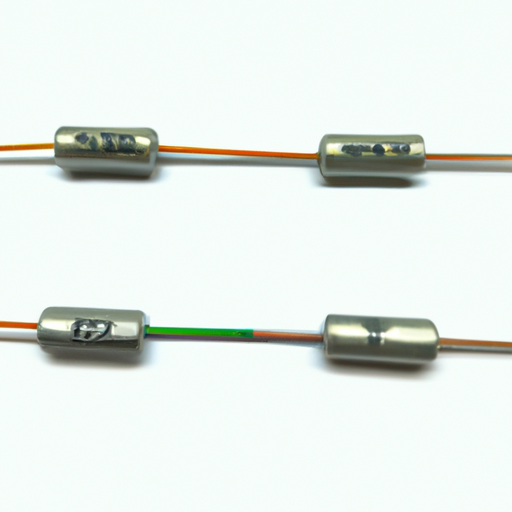What kind of product is a supercapacitor?
What Kind of Product is a Supercapacitor?
I. Introduction
In the realm of energy storage technologies, supercapacitors have emerged as a pivotal innovation, bridging the gap between traditional capacitors and batteries. A supercapacitor, also known as an ultracapacitor or electric double-layer capacitor (EDLC), is a device that stores electrical energy through electrostatic charge separation. Unlike conventional capacitors that store energy in an electric field, supercapacitors utilize electrochemical processes, allowing them to achieve higher energy storage capacities. This article delves into the significance of supercapacitors in modern technology, exploring their historical development, operational principles, key characteristics, applications, advantages and disadvantages, and future trends.
II. Historical Background
The journey of supercapacitors began in the 1950s, with the development of the first double-layer capacitors. However, it wasn't until the 1990s that supercapacitors gained traction in commercial applications. Key milestones include the introduction of carbon-based materials, which significantly enhanced energy storage capabilities. The evolution of supercapacitor technology has been marked by continuous improvements in materials and design, leading to devices that can store and deliver energy more efficiently than traditional capacitors and batteries. While batteries are known for their high energy density, supercapacitors excel in power density, making them suitable for applications requiring rapid charge and discharge cycles.
III. How Supercapacitors Work
A. Basic Principles of Energy Storage
Supercapacitors operate on two fundamental principles: electrostatic charge storage and electrochemical double-layer capacitance (EDLC). In electrostatic charge storage, energy is stored in an electric field created between two conductive plates separated by an insulating material. In contrast, EDLC involves the formation of an electric double layer at the interface between the electrode and electrolyte, where ions accumulate, allowing for greater energy storage.
B. Components of a Supercapacitor
A supercapacitor consists of three main components:
1. **Electrodes**: Typically made from porous carbon materials, electrodes provide a large surface area for charge storage.
2. **Electrolytes**: These can be aqueous or organic solutions that facilitate ion movement between the electrodes.
3. **Separator**: This component prevents direct contact between the electrodes while allowing ionic movement, ensuring safe operation.
C. Types of Supercapacitors
Supercapacitors can be categorized into three main types:
1. **Electric Double-Layer Capacitors (EDLC)**: These utilize electrostatic charge storage and are known for their high power density.
2. **Pseudocapacitors**: These employ fast redox reactions at the electrode surface, offering higher energy density than EDLCs.
3. **Hybrid Capacitors**: Combining features of batteries and supercapacitors, hybrid capacitors provide a balance between energy and power density.
IV. Key Characteristics of Supercapacitors
A. Energy Density vs. Power Density
One of the defining characteristics of supercapacitors is their energy density, which is lower than that of batteries but significantly higher than traditional capacitors. However, their power density is exceptionally high, allowing for rapid charging and discharging.
B. Charge and Discharge Rates
Supercapacitors can charge and discharge in seconds, making them ideal for applications that require quick bursts of energy. This rapid response time is a significant advantage over batteries, which typically take longer to charge.
C. Cycle Life and Longevity
Supercapacitors boast an impressive cycle life, often exceeding one million charge-discharge cycles. This longevity is attributed to their electrostatic storage mechanism, which experiences less wear and tear compared to chemical reactions in batteries.
D. Temperature Stability
Supercapacitors exhibit stable performance across a wide temperature range, making them suitable for various environmental conditions. This stability is crucial for applications in extreme climates.
E. Environmental Impact and Sustainability
With growing concerns about environmental sustainability, supercapacitors present a more eco-friendly alternative to traditional batteries. They often use less toxic materials and have a longer lifespan, reducing waste.
V. Applications of Supercapacitors
A. Consumer Electronics
Supercapacitors are increasingly used in consumer electronics, such as mobile devices and laptops. They provide quick bursts of power for functions like camera flashes and can enhance battery life by supporting energy-intensive tasks.
B. Automotive Industry
In the automotive sector, supercapacitors play a vital role in electric vehicles (EVs) and regenerative braking systems. They can quickly capture and release energy during braking, improving overall energy efficiency.
C. Renewable Energy Systems
Supercapacitors are essential in renewable energy systems, such as solar and wind energy storage. They help stabilize the grid by storing excess energy generated during peak production times and releasing it during demand spikes.
D. Industrial Applications
In industrial settings, supercapacitors are used in uninterruptible power supplies (UPS) and power backup systems. Their ability to deliver rapid energy boosts makes them ideal for maintaining power during outages.
VI. Advantages and Disadvantages of Supercapacitors
A. Advantages
1. **Fast Charging and Discharging**: Supercapacitors can be charged and discharged in seconds, making them ideal for applications requiring quick energy delivery.
2. **High Cycle Stability**: With a cycle life that can exceed one million cycles, supercapacitors offer longevity and reliability.
3. **Low Maintenance Requirements**: Their robust design and lack of chemical reactions mean that supercapacitors require minimal maintenance.
B. Disadvantages
1. **Lower Energy Density Compared to Batteries**: While supercapacitors excel in power density, their energy density is lower than that of batteries, limiting their use in applications requiring long-term energy storage.
2. **Cost Considerations**: The initial cost of supercapacitors can be higher than traditional batteries, which may deter some consumers and industries.
3. **Limited Voltage Range**: Supercapacitors typically operate within a limited voltage range, which can restrict their application in high-voltage systems.
VII. Future Trends and Innovations
The future of supercapacitors looks promising, with ongoing research and development focused on enhancing their performance. Innovations in materials, such as graphene and nanomaterials, are expected to improve energy density and reduce costs. Additionally, the integration of supercapacitors with other energy storage systems, such as batteries, could lead to hybrid solutions that leverage the strengths of both technologies. As the demand for efficient energy storage solutions continues to grow, the market for supercapacitors is poised for significant expansion.
VIII. Conclusion
Supercapacitors represent a crucial advancement in energy storage technology, offering unique advantages that complement traditional batteries and capacitors. Their rapid charging capabilities, long cycle life, and environmental sustainability make them an attractive option for a wide range of applications, from consumer electronics to renewable energy systems. As research and innovation continue to drive improvements in supercapacitor technology, their role in the future of energy storage will undoubtedly become more prominent. The evolution of supercapacitors not only highlights the importance of energy efficiency but also underscores the potential for sustainable energy solutions in an increasingly electrified world.
IX. References
1. Conway, B. E. (1999). *Electrochemical Supercapacitors: Scientific Fundamentals and Technological Applications*. Kluwer Academic/Plenum Publishers.
2. Miller, J. R., & Simon, P. (2008). *Electrochemical Capacitors: Challenges and Opportunities*. *Science*, 321(5889), 651-652.
3. Simon, P., & Gogotsi, Y. (2008). *Materials for Electrochemical Capacitors*. *Nature Materials*, 7(11), 845-854.
4. Liu, J., et al. (2014). *Recent Advances in Supercapacitors: Materials and Applications*. *Energy & Environmental Science*, 7(1), 1-25.





